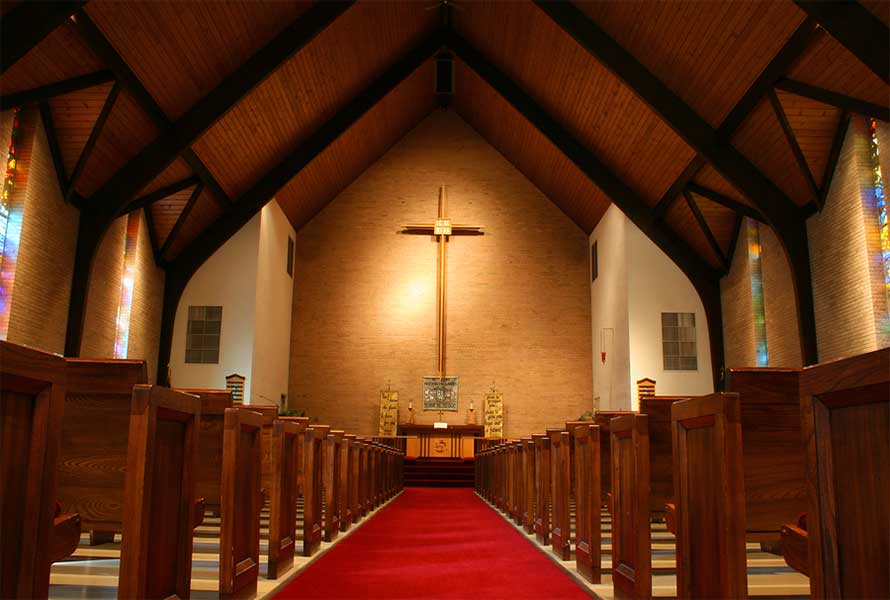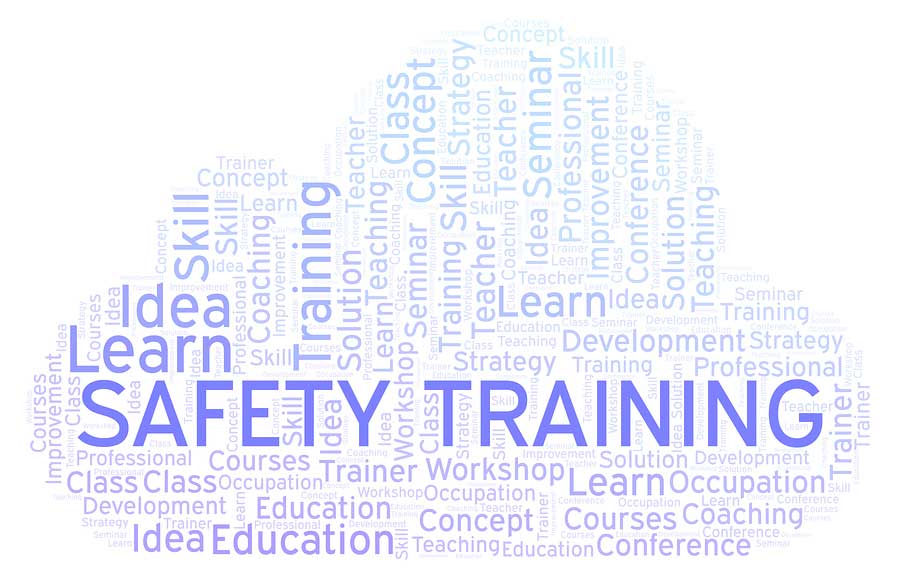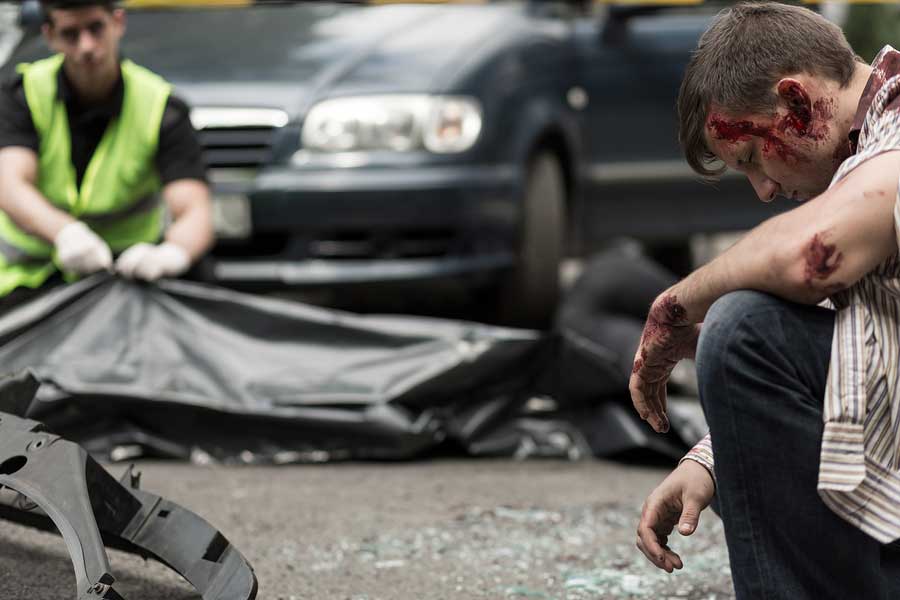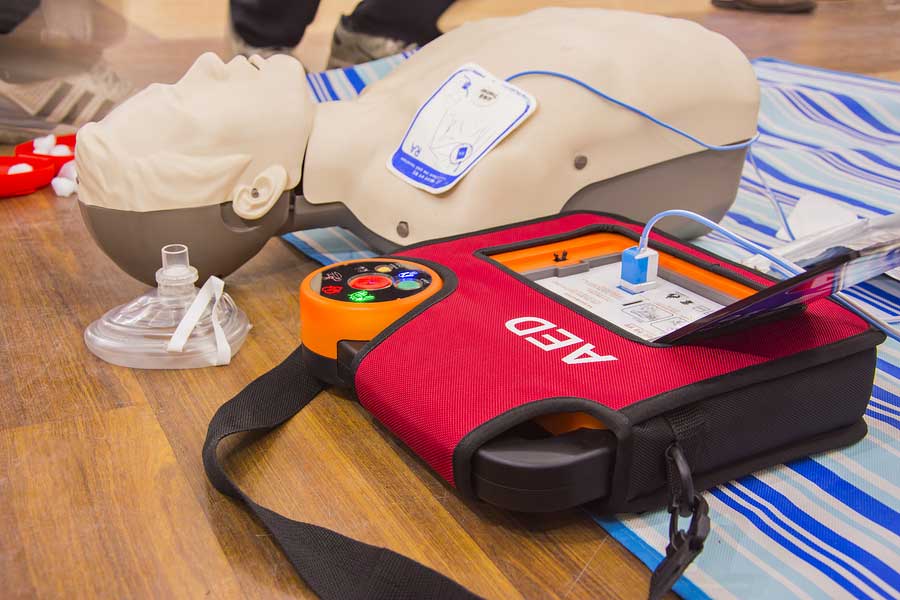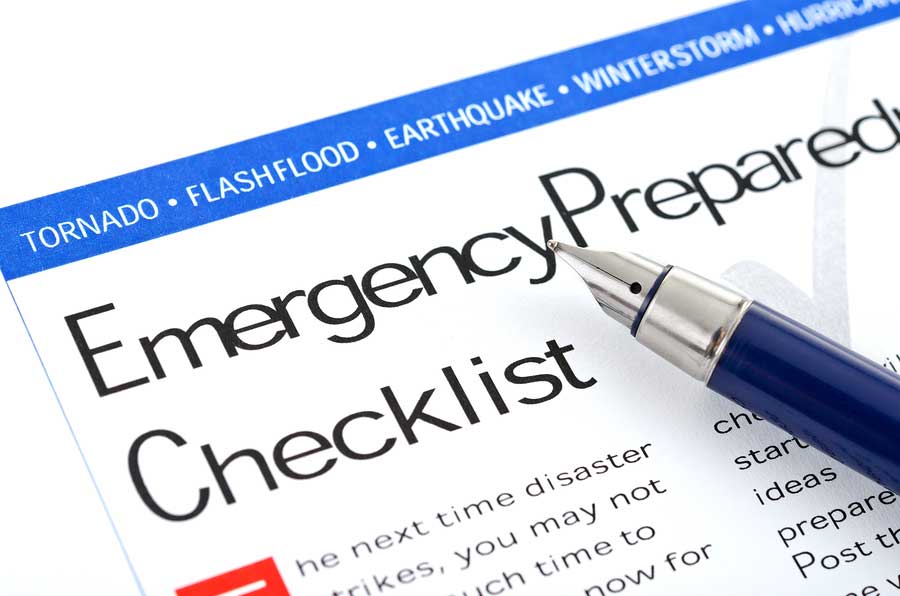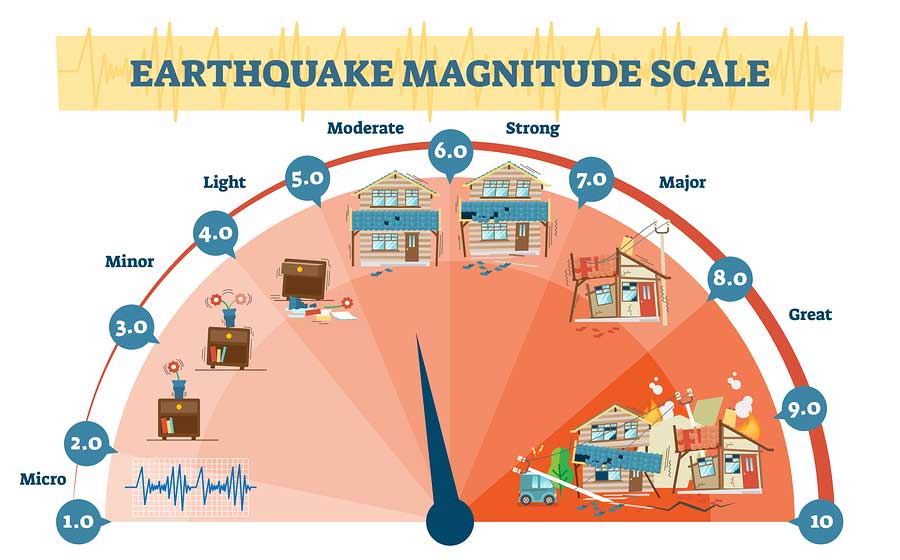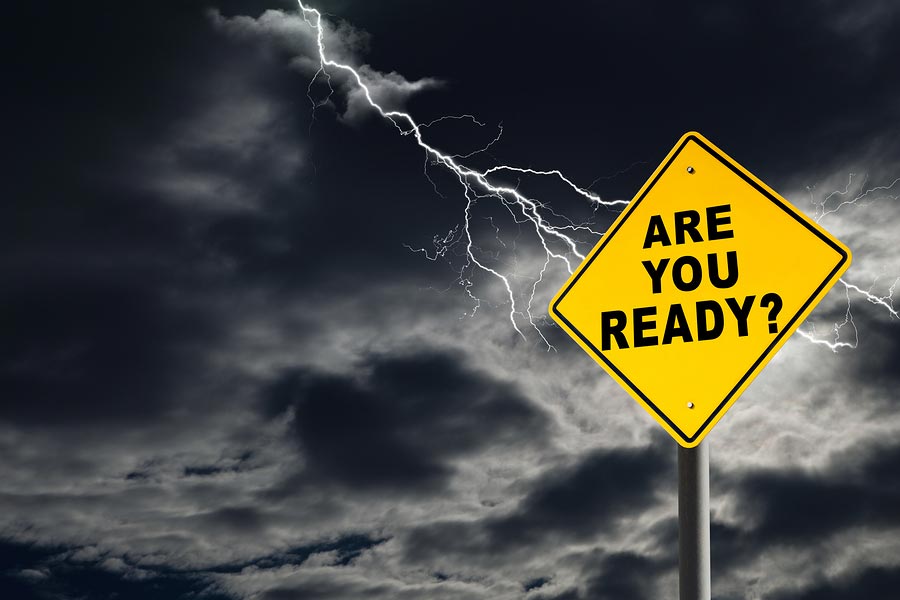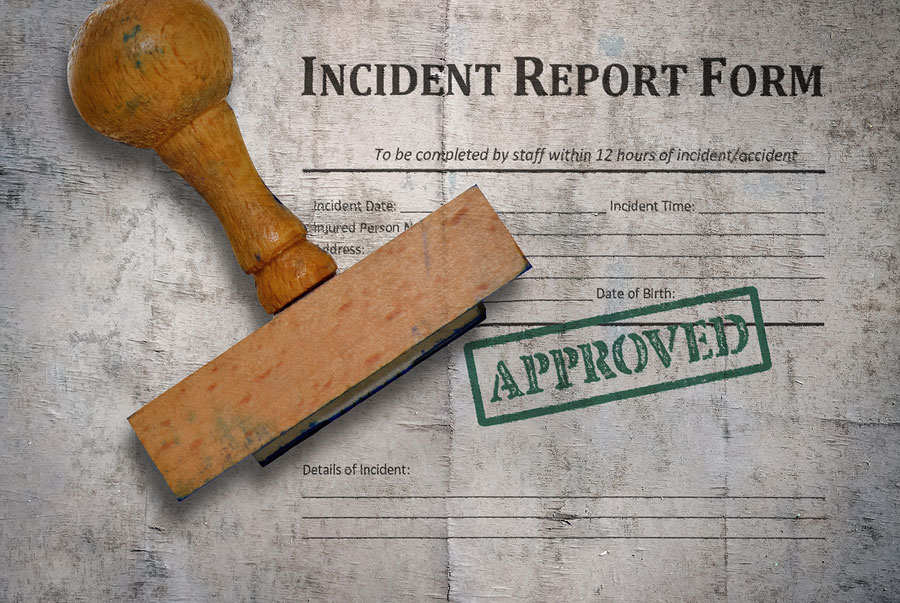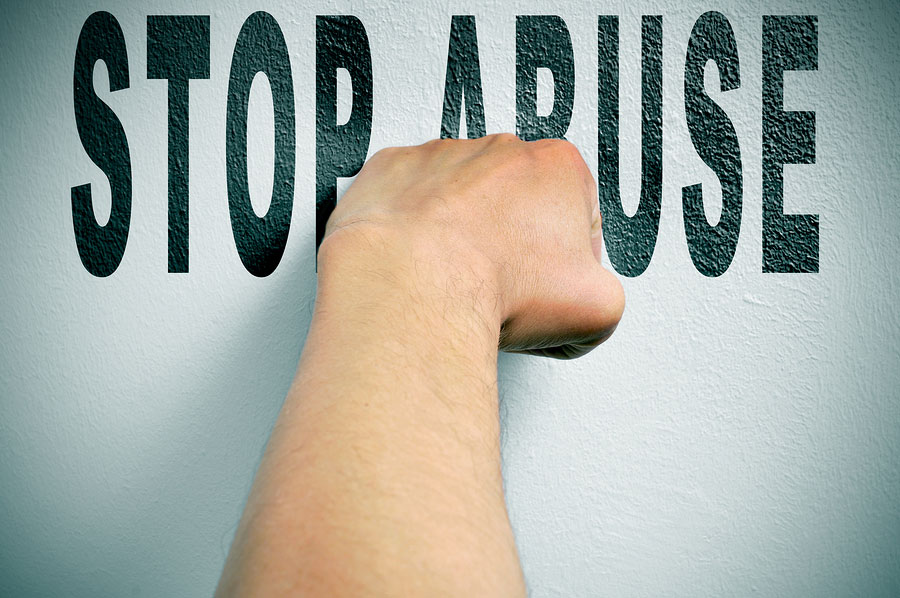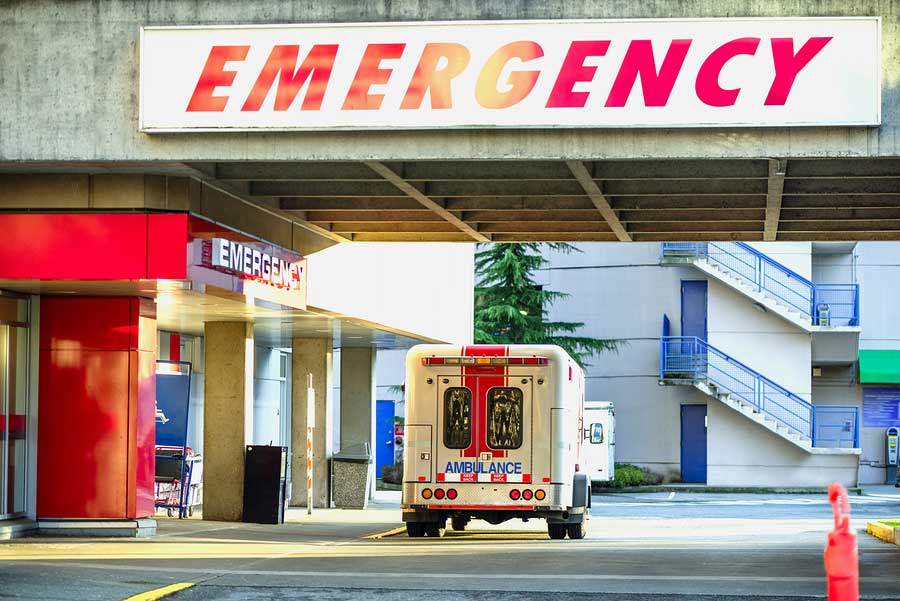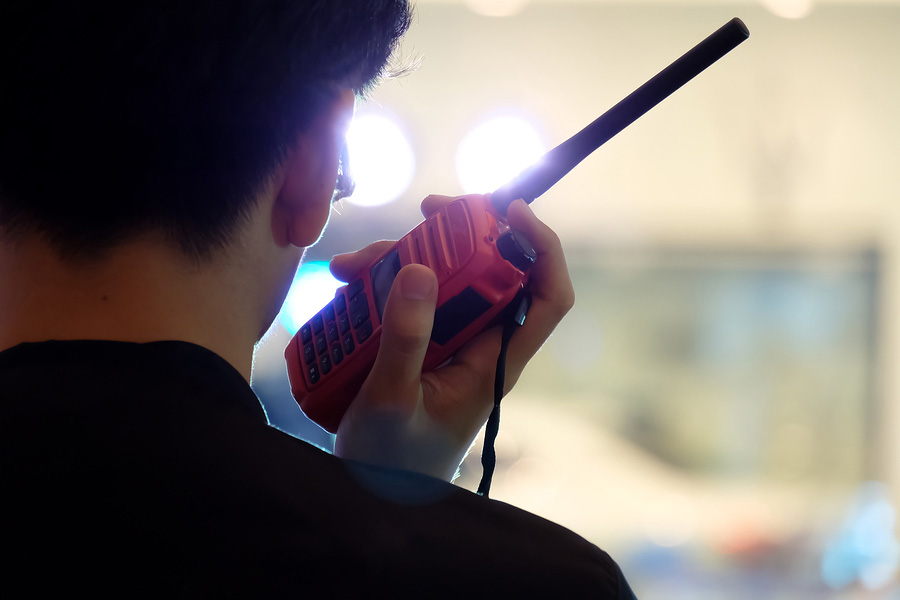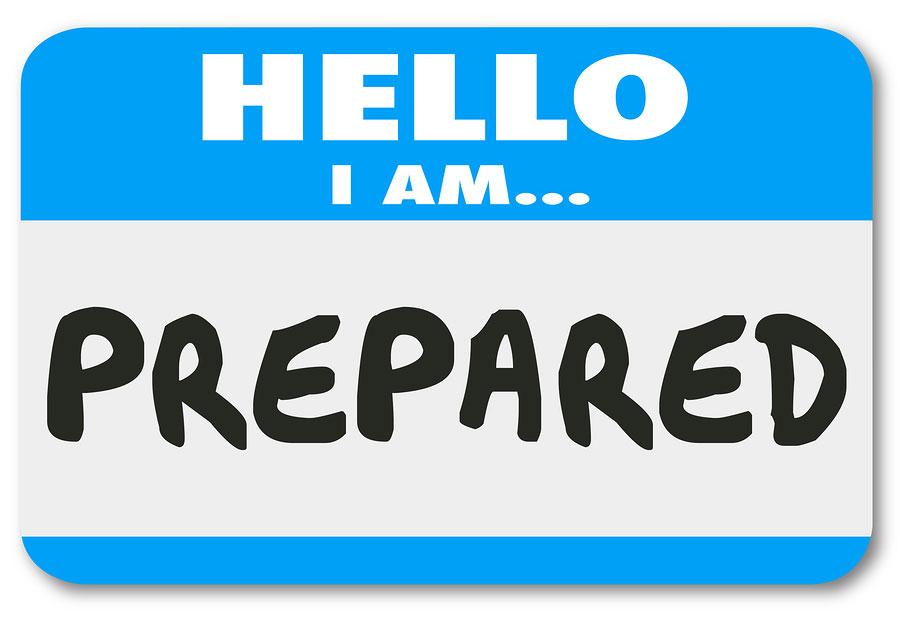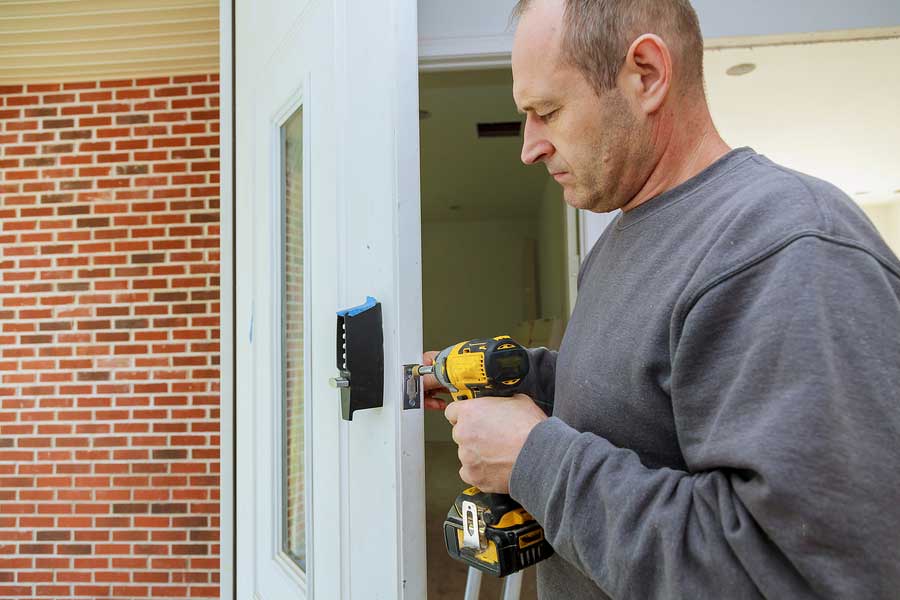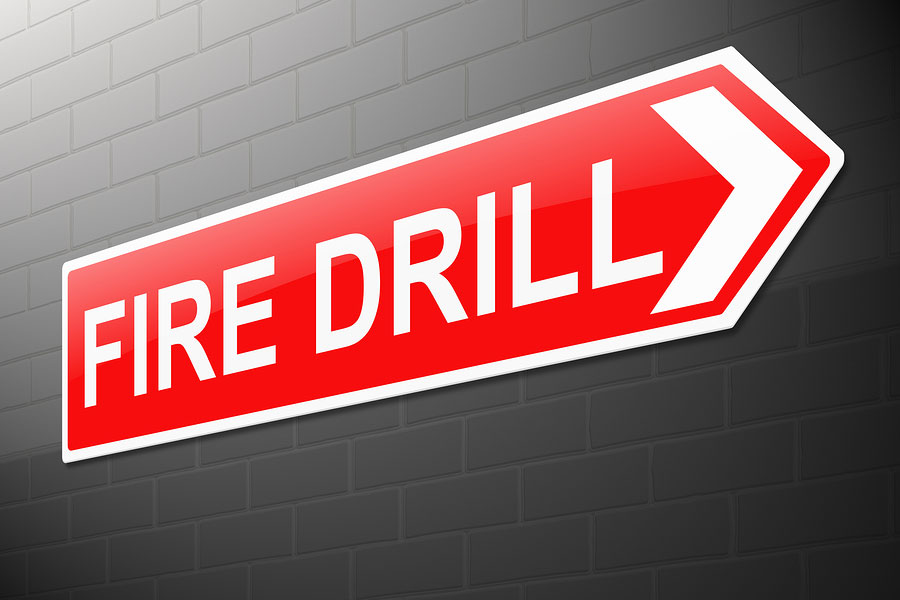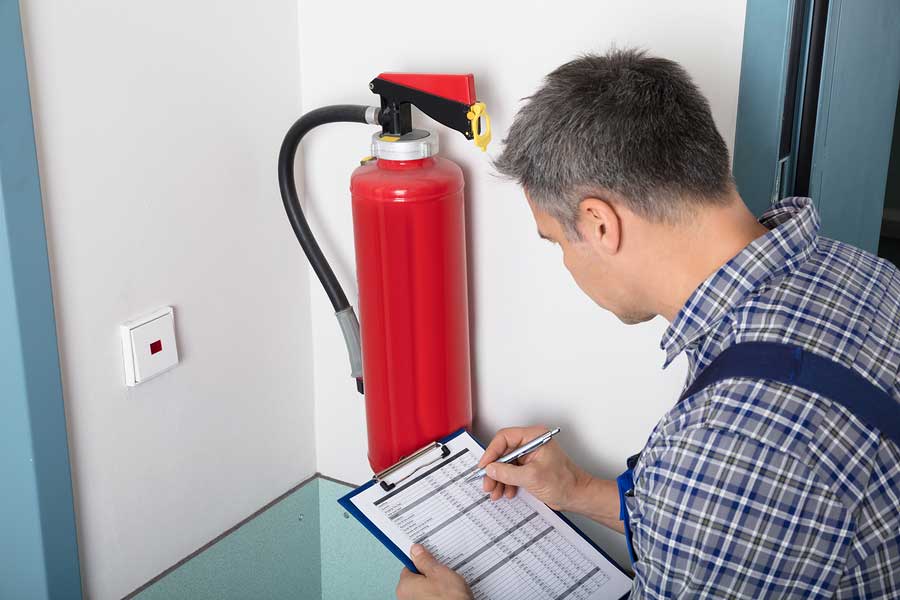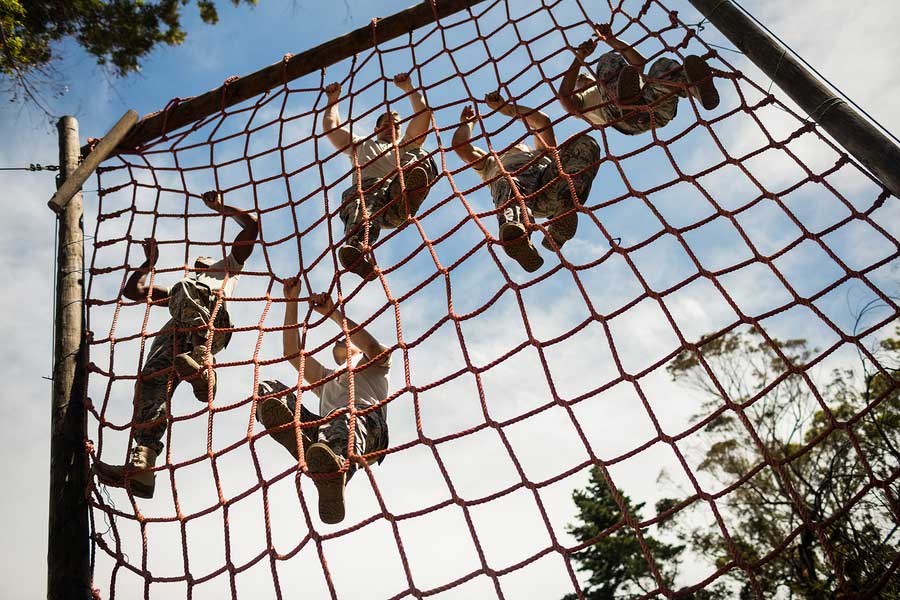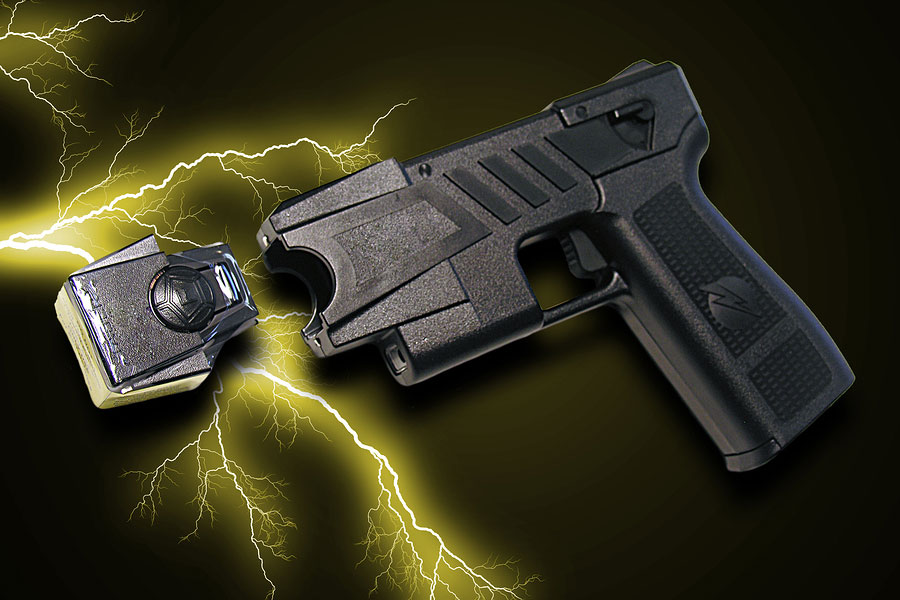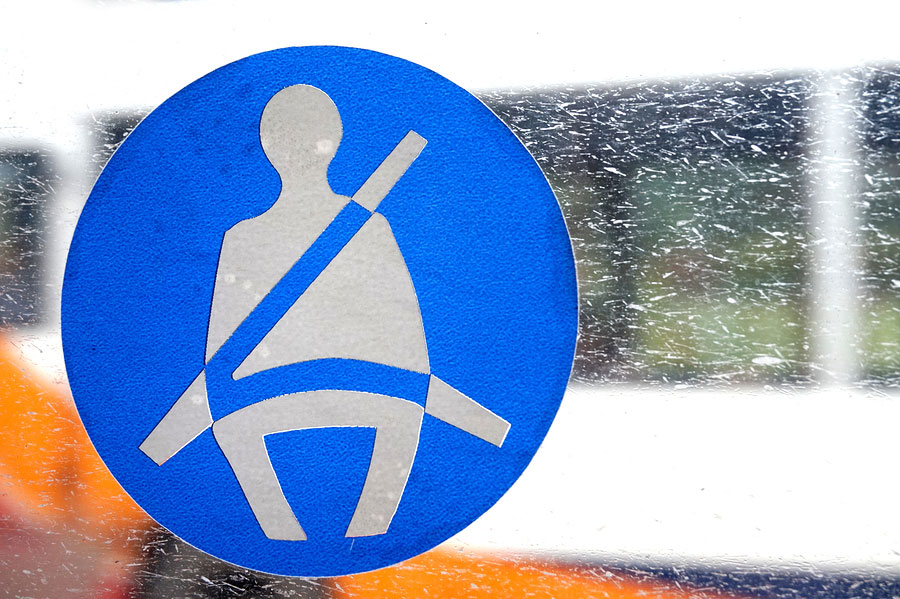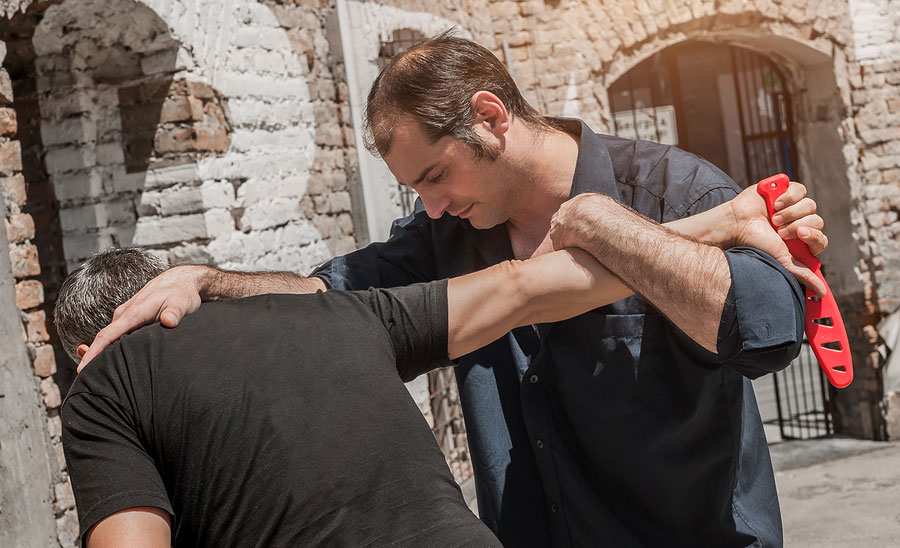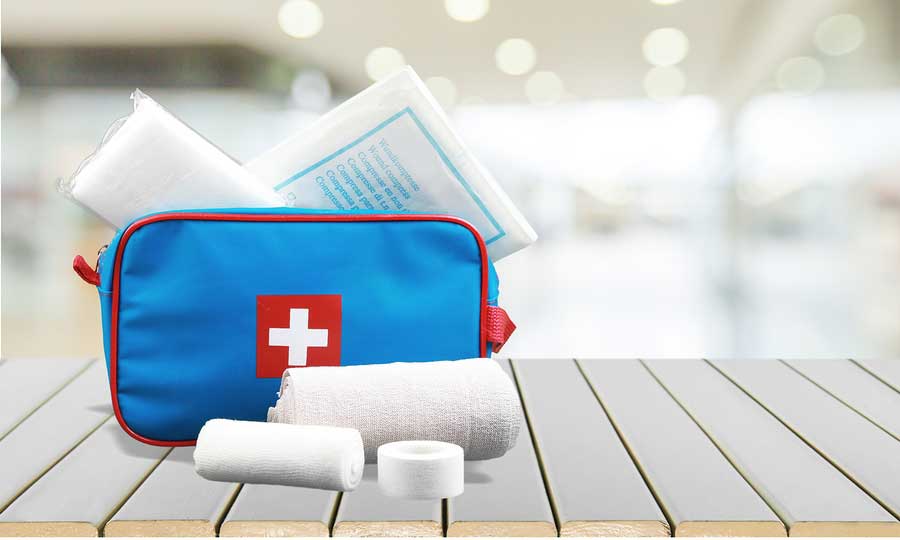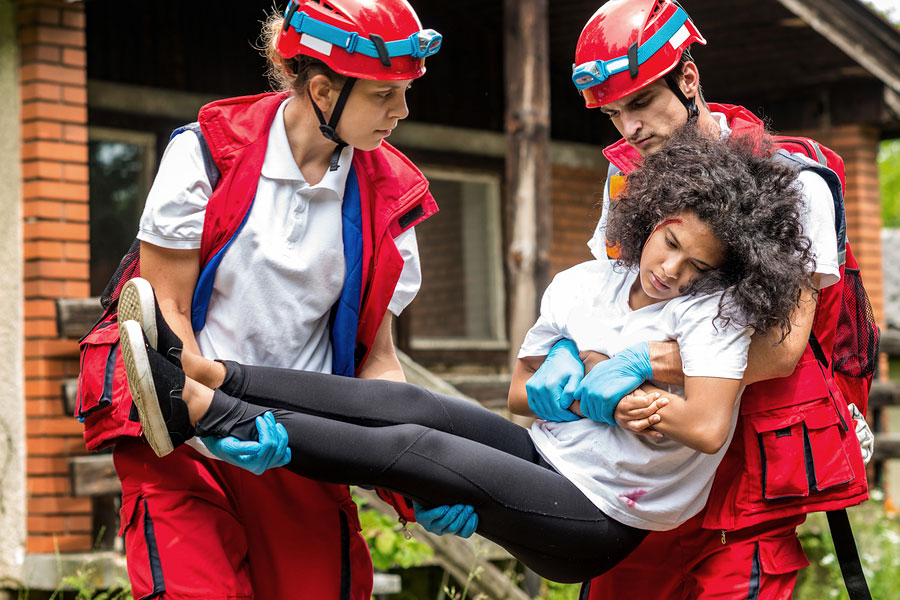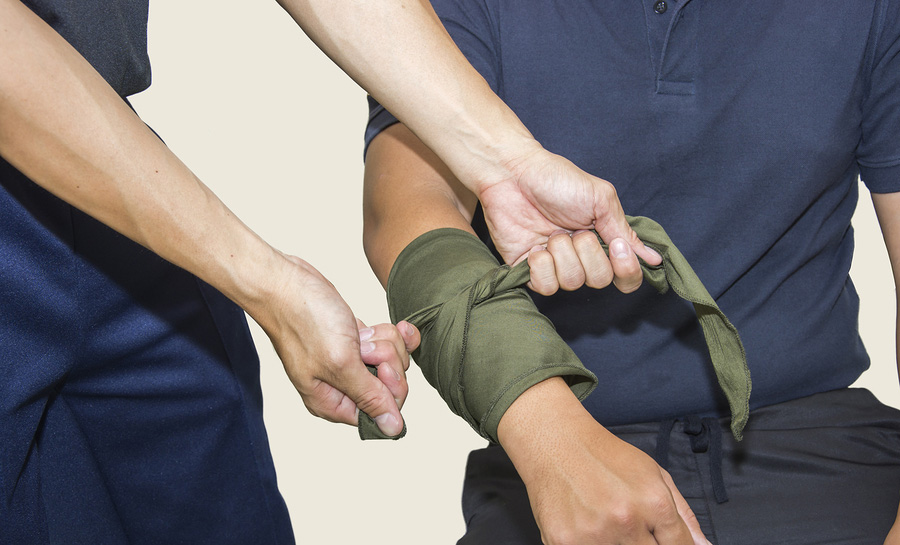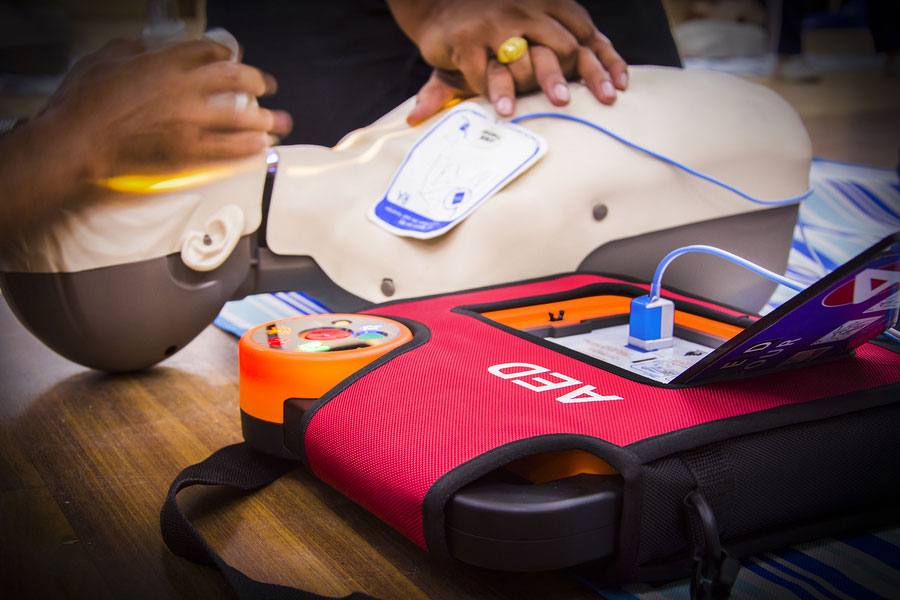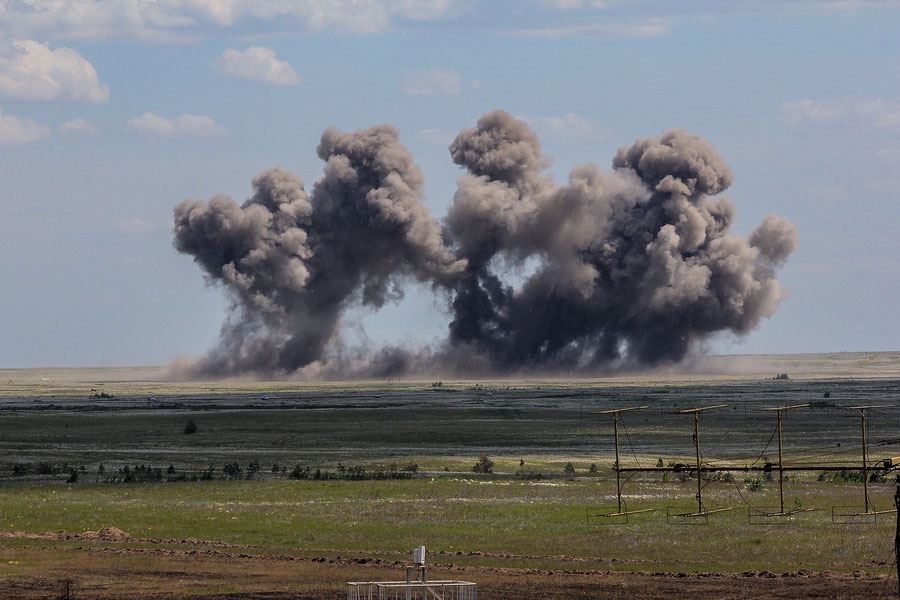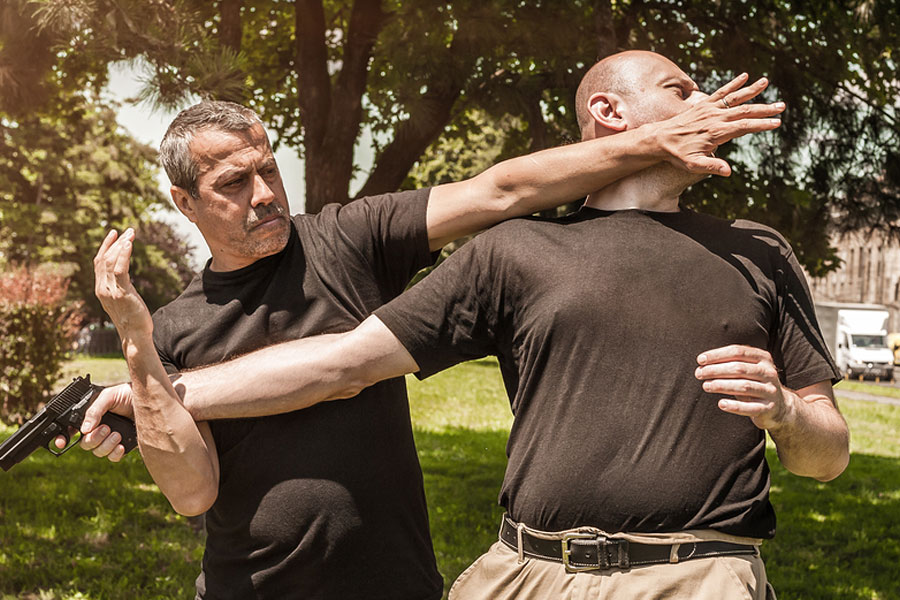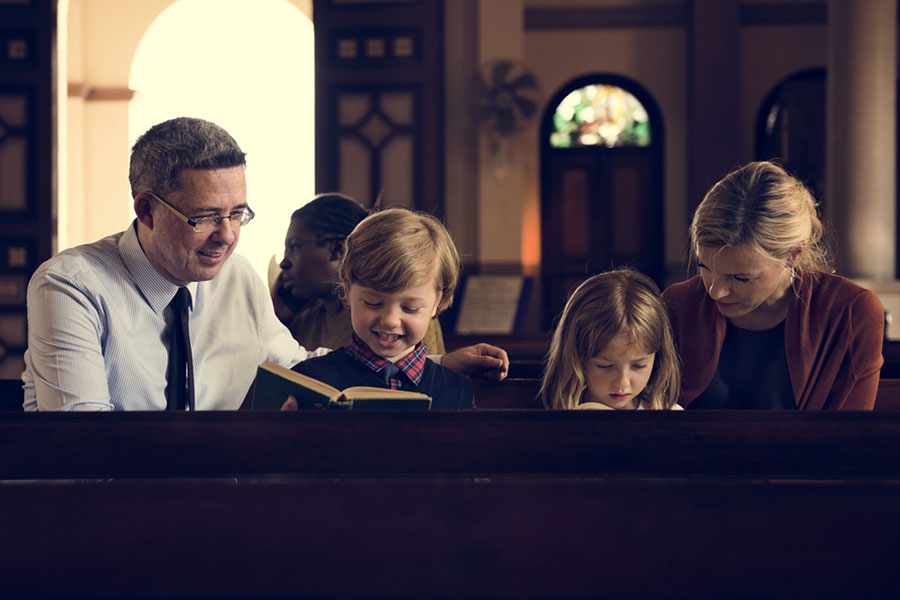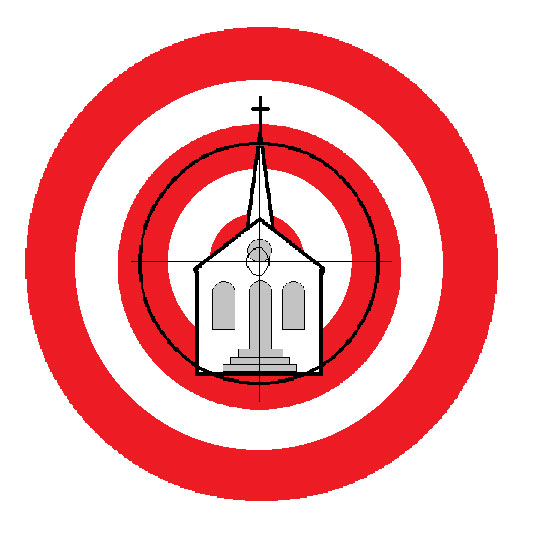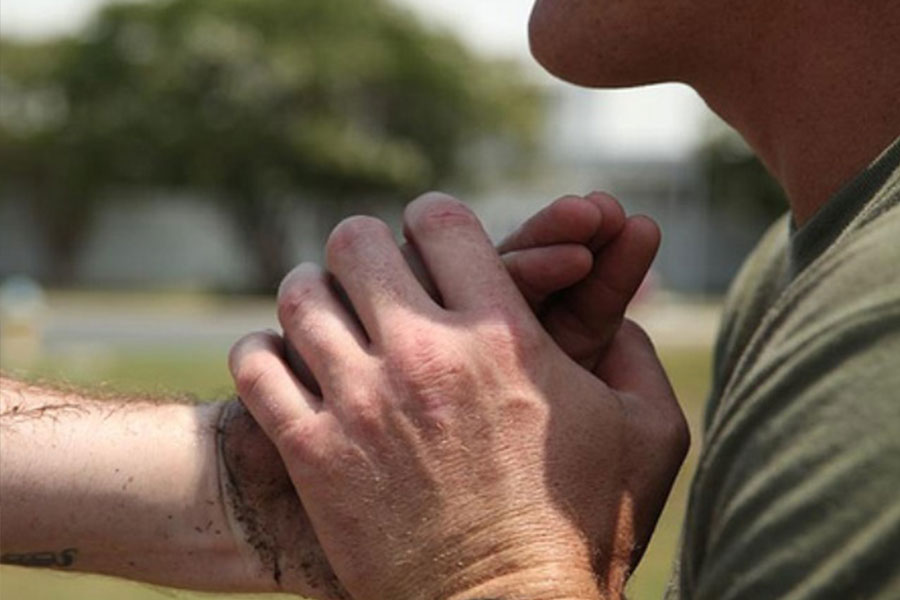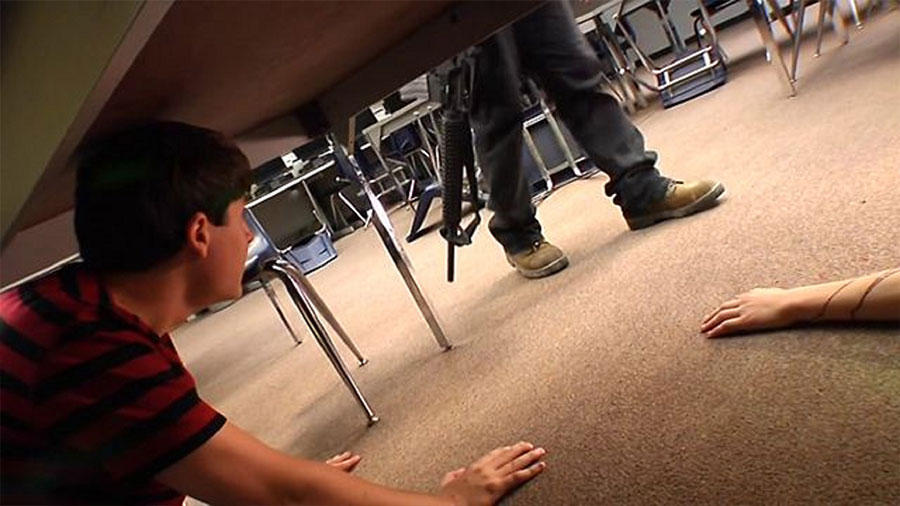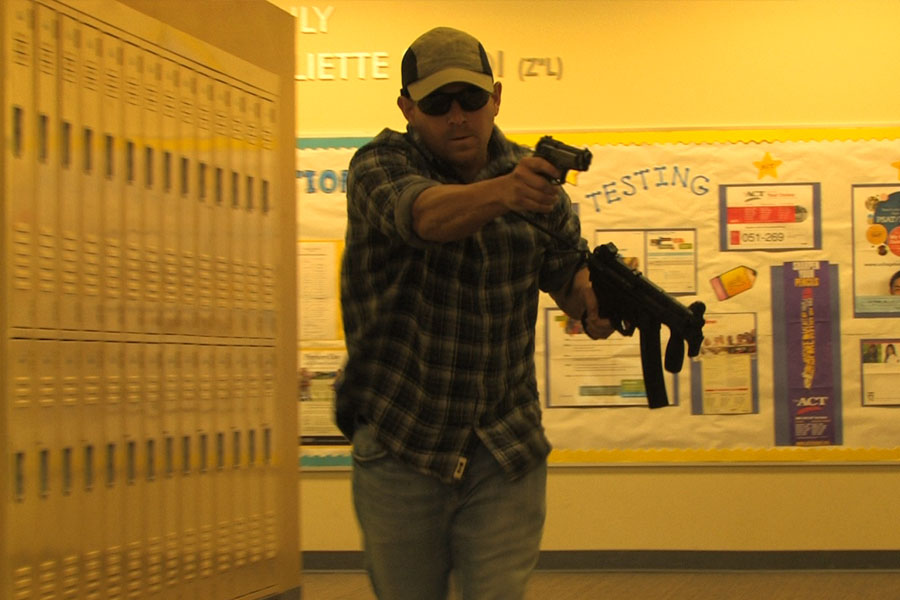Most of us tend to think of a church as a sanctuary, not only as a religious center but as a safe place. In recent years, however, the “safe place” does not seem so safe anymore. Churches may now be, on the average, more fireproof and better able to withstand storms, but criminal activity has become more of a threat during the past few decades.
He trains my hands for war, so that my arms can bend a bow of bronze (2 Samuel 22:35 and Psalm 18:34). As David was trained for war, we should be trained for defense.
The first step in self-defense is awareness. Likewise, the first line of defensive gear is items which aid our awareness - detection equipment. These range from very simple to extremely sophisticated. There are literally hundreds of detection devices of many types, but not all are feasible for most churches.
Communication is the key to several functions of a Church Safety Team. Team members need to be in touch at all times, whether it is routine business or a dire emergency. Other than face-to-face conversation, we need tools to communicate.
There are several tools and supplies which prove useful in a Church Safety Ministry. While team members focus on what they use while covering their jobs on a weekly basis, it is easy to overlook basic supplies which are out of mind until they are needed. Among these are office supplies, housekeeping items, and basic safety supplies.
All jobs have work requirements. We need to know how to do the job. We also need to be properly dressed for the work that is done. Being a part of a Church Safety Ministry is no exception.
In some situations we can see it coming. You are naturally on guard, on the defensive. Other times the signs are not so obvious. Unless you are especially observant, you may be caught unaware. But we can be alert and watchful when dealing with people, positioning ourselves so we can react defensively if the other person does attack.
When putting ourselves a safe distance from a potentially hostile person, we must first consider what makes the distance safe or unsafe. A few of the factors are personal space, reach, thrust, travel time, and detection/reaction time.
The first step in defense is awareness of threats. Basically, it is knowing what is going on. Knowing about threats to the community and the church, we prepare accordingly. For self-defense, situational awareness is closer to us in time and place. This means being aware of your surroundings, who is there, what is happening, and any changes in the situations.
Most churches are prepared to handle minor-to-moderate injuries to one or a few persons. But what if there are substantially more injuries? Or what if the injury or injuries are severe? It’s too easy to think, “It can’t happen here.” It may not have happened to a church in your location, but in each case there was a first time. It is better to be prepared – just in case.
There are items needed for responding to an injury or medical emergency in the church or at a church-related event. Most needed are basic First Aid supplies. But what if there is a severe cut or burn? What if a person has a heart attack and CPR is not working? What if a church member or visitor goes into an anaphylactic shock (whole-body allergic reaction)? Are you equipped?
We may be all right doing some First Aid procedures just going by what we’ve seen and what we figure out. Washing a small cut and applying a Band-Aid® would be in this category. But what if there is a more serious injury? Proper training could make the difference between survival or death, recovery or permanent damage.
When there is an injury or a medical emergency, someone asks, "Is there a doctor in the house?" The situation at hand requires a person trained in responding to Code Blue (injury or medical emergency). Illness and injury does happen, even in places of worship. We need to acknowledge this, be ready for them, and work to make them less likely
We’ve stepped in and defused a potentially explosive situation using verbal de-escalation. As a Church Safety Ministry, we are interested in preventing another incident or making it less likely. We also want to be prepared in case it happens again.
Sometimes, when there is a tense situation threatening to become a major disruption, we hear an official say, “We’re trying to keep things under control.” When we are trying to defuse developing disruption through verbal de-escalation, we intend first to keep it under control, then to stay in control until it comes to a peaceful end.
When stepping into a situation, we are aiming to defuse escalating tensions before they become disruptive. The proven means for doing this is verbal de-escalation. Real-life experiences show that words can be used to cool down heated exchanges. A paraphrase of what Solomon said is, “A calm answer cools anger.”
In a congregation, threat assessment can forecast the potential for disruptive behavior, even violence, by persons in the congregation, persons associated with church members, and known persons in the community. This can be an opportunity for ministry. For some, intervention in the form of personal counseling may be possible and successful. We can’t change the weather, but there is hope for a person at risk.
Knowing that we have perils – earthquakes, floods, and wildfires – how do we protect the flock? Earthquakes come unannounced, but we usually do have some warning of floods and wildfires. In all cases, we need preparation, communication, and coordination.
Knowing that we have perils – earthquakes, floods, and wildfires – how do we protect the flock? Earthquakes come unannounced, but we usually do have some warning of floods and wildfires. In all cases, we need preparation, communication, and coordination.
Major windstorms can be spectacular. Most are awesome, some are beautiful, and many are scary – scary because strong windstorms are damaging and dangerous. For us in Church Safety Ministry, the issue is how we can protect those who come to church. We are also concerned about how to minimize damage to church property.
And the rain fell, and the floods came, and the winds blew and beat on that house, but it did not fall, because it had been founded on the rock ... And the rain fell, and the floods came, and the winds blew and beat against that house [built on the sand], and it fell, and great was the fall of it.” (Matthew 7:25, 27)
Winter can be beautiful. Icicles, frost on windows, snow drifts, flocked trees, children and animals at play in the snow. Beautiful, yes, but …Winter can also be a beast. Winter has its hazards, with risks of illness, injury, and death. Winter readiness for churches means being ready to meet the beast in three areas - Structural Stewardship, Safety, and Health.
“Aftermath” originally meant a second mowing. It has come to mean that which follows. Though the aftermath may be good or bad, the term is now generally used for difficult or unpleasant consequences. When it comes to church safety and security, our choices and actions may influence whether the aftermath of the use of force is good or bad.
Some people assume that “armed” means having lethal weapons, such as knives, archery, or firearms. But others recognize that a defender can be armed with a weapon that is less-than-lethal or essentially non-lethal. There are really three levels of force in this question - No Weapons, Less-than-Lethal Weapons, and Lethal Weapons.
In protecting the flock, we the sheepdogs, need to choose wisely which level of force to use in any situation. More than just knowing, we should drill responses to various situations so we can quickly decide what to do.
Where is the use of force justified and where it is excessive? For law enforcement, professional security, institutional security, volunteer defensive teams, and personal defense, the Use of Force is a Matter of Law. Thus, it is imperative that we know and remain up-to-date on our state’s laws regarding the use of force.
Our primary responsibility in church security is to protect the flock. And preventing violence whenever possible is the best way. But when violence is imminent or in progress, we must be ready to stop it. This brings up questions of when and how to use force in defending the congregation.
When there are allegations of child abuse in the church or at church related activities, how we respond (including reporting) can affect the effectiveness of the church’s ministry. Therefore, it is imperative that we fully and honestly report allegations of abuse, and that we take action to protect both the alleged victim(s) and the rights of the accused.
We cannot totally prevent child abuse – we have no control over most places in the community. But, for the most part, we can prevent it in our own jurisdiction, the church. We should have policies and procedures which, if followed, will guard against it happening.
Child abuse is more prevalent than many of us want to acknowledge. Children that are abused come to church, and so do abusers. The flock that we are to know is the flock we protect, and it may include both abused and abuser.
As a society, we expect families, schools, and churches to spread wings of protection over our children. At the very least, we expect safety for our children when they attend church and church-sponsored activities. Is your church doing all it can to protect the vulnerable?
Holidays have their own risks. These include fire hazards, icy roads and walkways, crowds, contagious sicknesses, thieves, and anti-Christian hate crimes. As Church Safety Ministry members, at this season and through the year, along with good cheer we can give the gift of safety.
We need light to see, especially when inspecting rooms, guiding people after dark, etc. Then, when the building is evacuated or everyone has to go to shelter, some may need assistance. Do you have the necessary equipment needed to keep people safe when the lights go out?
When you need someone to help NOW, you do not always have the time to go find them, or even to send someone to get them, especially when you have to stay on the scene and take care of the situation, such as in the scenario. When these types of situations arise, are you equipped to make the call?
Communication is critical to the success of a safety team in a developing emergency situation. Having the right equipment for this will contribute to its efficiency.
Because we protect the flock – God’s people – from various threats, human and natural, we must have the knowledge, training and skills to do so. We also need the right tools. The New Testament refers to being equipped for service. Here we begin with studying, identification, and putting on those items that help us do our job.
It is wise to be ready to defend the flock against any potential threats, especially the most likely, and the most devastating. To put an active shooter response into place in our church and carry it out, we do four things - Determine, Develop, Drill, and Defend.
The final goal of an active shooter response is ending the attack by neutralizing the shooter. This is done by capturing, disabling, or putting down the killer. This is the fourth of the four emergency skills for an active killer situation - Evacuate, Hide, Call for help, and Engage the active killer.
Immediate response is required when an attack is initiated. A later response means more potential casualties. In most cases, by the time police arrive the killing is over, the killer is usually dead or gone. It is up to those who are there to protect themselves.
Means of guarding against deadly force attacks on churches can be summarized as the “Four Ds” Detect the Threat, Deter the Threat, Delay the Threat, Defeat the Threat. The second D is Deter the Threat. This involves risk assessment, facility assessment, and open resistance. Once a threat has been detected, the Safety Team, functioning as a security unit, begins to challenge the threat, aiming to defeat it.
Means of guarding against deadly force attacks on churches can be summarized as the “Four Ds” Detect the Threat, Deter the Threat, Delay the Threat, Defeat the Threat. The first D is Detect the Threat. This involves perception, detection and identification. Detecting threats is situational awareness on both team and individual levels.
A few common causes of church fires are arson, faulty wiring, faulty furnaces and stoves, overheated organ motors, careless use of candles and holiday decorations, lightning, and carelessness with smoking materials. Does your team carry out regular fire risk assessments in your church? Check out this week’s topic to learn how.
As safety team members responsible for the safety of other people, we cannot responsibly back away from every potentially dangerous situation. There are times when we must be involved with a disruptive person, but there are ways of increasing our safety while doing so, such as how we stand and how close we get.
Alarms, fire extinguishers, sprinklers, exit signs…No matter how well we try to prevent a fire, we must be ready … just in case. Ready, not only in our homes, but in the schools, at our places of business, and in our churches.
A few common causes of church fires are arson, faulty wiring, faulty furnaces and stoves, overheated organ motors, careless use of candles and holiday decorations, lightning, and carelessness with smoking materials. Does your team carry out regular fire risk assessments in your church? Check out this week’s topic to learn how.
Some church safety ministries are named “Eyes and Ears.” How appropriate! Take our eyes and ears through the church building, into closets and empty classrooms, into restrooms that should be unoccupied, and into every potential hiding place we come across. Keep our eyes open for things that don’t belong and Keep our ears open for unusual sounds.
Lack of communication, poor transmission, incorrect information, misunderstanding, and other failures to communicate effectively can lead to lack of response, improper response, needless response, and other errors. The consequences range from harmlessly comical to tragic. For a church safety ministry, an improper or inadequate response to an emergency may possibly lead to greater property damage, personal injury and/or death, lawsuits, and insurance claims.
For things to be done decently and in order in our churches, we need bylaws (or charters), policies, and procedures. Some of these should concern issues of safety and security. Members of the church safety and security team need to know these policies and procedures and follow them.
When we join or begin work in an organization, including a church safety ministry, there is some kind of orientation - Who we are, what we believe, our mission, our values, what we do. When persons join the church safety team, they may have a background in security, military or law enforcement. However, they should also know how safety and security is a ministry and how it interacts with their faith and doctrine.
Now that the church is organizing a safety ministry, who will serve? How will we fill the positions created? Three ways of recruiting volunteers are Announce the need, Invite people to serve, and Search for qualified persons.
There are times when “unprepared” is a very tragic word. Preparation for emergencies takes preparation. This means assembling concerned persons, assessing the risks, planning how to meet the risks, and putting these plans into action. Since this is a group effort, the group needs direction and guidance. This means organization, whether formal or informal.
Your Safety Ministry Proposal Team has identified and analyzed the safety and security risks and readiness of the congregation with a Church Security Assessment. What’s next? We use the information and analysis to compose the proposal we present to the church leadership.
Does your church have a safety or security ministry? If not, it has a lot of company. A few years ago, over 75% of churches did not have plans to meet emergencies or provide security. During the past couple of years that has been slowly changing. Yet most churches are still without plans to protect the congregation from crime, severe weather, and other risks.
People who use equipment they do not know how to properly operate are often characterized as “a danger to themselves and others.” Many kinds of equipment and tools have inherent hazards. Certification is intended to be documentation that a person is qualified, knowing and understanding the rules and laws pertaining to their use.
For church safety ministries, a weapon is any object used to defend the flock against an attack. The church needs to set policies and guidelines for the possession and use of these weapons, especially firearms. Those carrying and using lethal and potentially lethal weapons should be trained and qualified in their use.
While we may need a concealed firearm for defense against deadly force, we do need to know how to defend against non-lethal force. Even if we do have self-defense training, we may at some time need a non-lethal weapon to bring a violent disrupter under control.
We are all familiar with the safe driving slogan, “Buckle Up for Safety,” which urges us to use our seat & shoulder belts. For Church Safety and Security Teams, this takes on a different connotation. A security belt can be where a Church Safety Team member carries some of the equipment used in guarding the flock, especially items used for defense.
Most church safety team members will never have to use self-defense measures, such as holds and takedowns, while guarding the flock. In most cases, verbal de-escalation followed by pastoral and/or professional counseling should be sufficient. Learning and practicing unarmed self-defense will equip us just in case it is needed.
Parry? What is that? it has come to mean blocking any kind of attack. For church safety and security teams, it means stopping a threatening blow in close quarters. As with situational awareness, this needs to be practiced until we naturally carry it out effectively in a disruptive incident.
As safety team members responsible for the safety of other people, we cannot responsibly back away from every potentially dangerous situation. There are times when we must be involved with a disruptive person, but there are ways of increasing our safety while doing so, such as how we stand and how close we get.
An essential component of safety and security is situational awareness. This is both environmental awareness, being alert to what is around you, and being aware of the situation – what is happening and what is developing.
Most injuries to which we respond in the church are accidental, some may be intentional and besides injuries, we may need to respond to medical emergencies. A person trained to respond to injuries and medical emergencies may know what to do, but not have what is needed at the time. Does your church have the necessary items to be prepared to respond?
As with other hazards on this planet, churches are not exempt from mass casualty events. If one struck your church, would you be ready to respond to the injuries? To be ready for a mass casualty event requires us to plan, train, practice, and equip now.
As members of safety ministries in our churches, we must be prepared to treat injuries, whether accidental or intentional. Every member of the safety team should learn the Bleeding and Broken Bones of trauma (severe injuries) response. Ideally, this should be taught not only safety ministry personnel, but as many church members as possible.
As members of a church safety ministry, we are not only called on to be watchful, but to respond to needs. The need may be a visitor wanting directions, or an older person needing help getting in the door. It could be a troubled person needing a calming influence. Or it could be a “Code Blue” call on our radios. Are you prepared to respond?
Not all hazards and disasters are natural. Some result from human activity (or inactivity/negligence) such as spills and explosions. In our local churches there are more immediate threats to our safety and security than we may realize. These are the hazards our safety ministries must guard against, whether to prevent or prepare to respond.
There is no specific season for floods, earthquakes or landslides. Though each of these may be more prevalent in one location than another, every area has at least some degree of risk. Essentially, they may happen almost anywhere, and anywhere it happens, we must be ready.
History is full of accounts of damaging winds. Windstorms can be as large as cyclones (including hurricanes, nor’easters, and typhoons) hundreds of miles in diameter, or as intense as tornadoes. Churches are not immune to windstorm damage. Is your church ready to face a storm?
Is your church ready to respond to a weather emergency, non-seasonal natural disaster (such as an earthquake), or human-caused or technological emergency/disaster (such as a chemical spill)? Are the church buildings weather-worthy? Are your records secure in place and/or backed up off-site? Do you have needed supplies?
For any area of service, whether in business, the public sector, or in religious communities (including churches), some training is beneficial. The same principle applies in today’s churches with all the different areas of ministry; youth ministries, men’s and women’s groups, kitchen work, grounds keeping, etc. All of these require learning and diligence, including safety & security ministries.
Police have found out that helping people of risk with verbal de-escalation protects the neighborhood at risk by reducing violence. And this begins with self control. How much more will self control benefit the church and everyone there in our use of verbal de-escalation to reverse a move toward disruption?
Verbal de-escalation is a role in which members of a Safety Team can minister to those in need. By helping them to calm down, avoiding disruption and violence . . .
Let’s face it – We as a church are ministering in a society with persons at risk, and some of them are in our church. Pastoral staff, greeters, ushers, and safety team members see the people coming into the church. As we watch, do we recognize signs that may lead to disruption?
Sometimes, verbal de-escalation is not enough, and we must defend ourselves as well as others. As members of Safety & Security Teams in our churches, we need to know how to gain control of a combative or non-compliant person with the least amount of commotion and disruption.
Sometimes, verbal de-escalation is not enough, and we must defend ourselves as well as others. As members of Safety & Security Teams in our churches, we need to know how to gain control of a combative or non-compliant person with the least amount of commotion and disruption.
Developing the ability to choose the right level on the Continuum of Force to use in any security situation in the church is critical to effectively defending the church without incurring legal liability and costly insurance claims.
Self-defense measures ruled as illegal could mean criminal charges for assault, manslaughter or murder. They could also lead to lawsuits against the church and individuals for violation of civil rights, injuries, or wrongful death. Wise measures of self-defense mean choosing the proper level of force to use.
Is church security Biblical? Current conditions in society, even in North America, justify having at least a few Safety Team members who are armed. But with the firepower comes responsibility. This means preparation (training), practice, and prudence.
With the prevalence of news reporting, there is no excuse for thinking, “No one would hurt a child.” The evidence is too clear that children are hurt by...
Sometimes, verbal de-escalation is not enough, and we must defend ourselves as well as others. As members of Safety & Security Teams in our churches, we need to know how to gain control of a combative or non-compliant person with the least amount of commotion and disruption.
Being on the move, on patrol, helps your safety/security team to cover more area. It also keep you alert, engaged in the business of protecting. During a service or event, you will meet more persons this way. One of these people may take the opportunity to tell you something they have seen or heard that you need to know.
As members of church security teams, the congregation depends on us. One of the qualifications of being on a team is being trustworthy, faithful, reliable, and that includes being present and available. You become a steward of the safety and security of the congregation.
A church needs qualified persons to serve in its safety/security ministry. There are two areas of qualifications biblical and task specific. As deacons, the security director and members of the committee and the team must be “of good repute, full of the Spirit and of wisdom” (Acts 6:3).
We must recognize and acknowledge the fact that our church can be the target of a hate crime. We can safely predict that someone could say hateful things about our church and/or other churches in our community. Knowing this, we can make and implement plans to prevent and respond to hate crimes.
There are times in church security when talk is not enough to de-escalate a situation. Or someone has to be stopped, and they do not heed calls to stand still or leave. Most laws and protocols hold that security persons use only the level of force needed which is appropriate to the threat.
We who are leaders in our churches ought to take heed to what is going on around our country and in our communities. There is the very real possibility of attacks on churches. The better part of wisdom is in recognizing danger and preparing to meet it.
Prepare to prevent abductions and respond to attempts.It is devastating to parents to learn that their child has been kidnapped. It is made worse to find out it was from a place where they are supposed to be safe, such as a school, day care center, or church. We, as a church, are responsible for the safety of children in our care, including prevention of kidnapping.
As Paul wrote to the Corinthians, a steward (anyone with a job) is expected to be faithful. This means doing what needs to be done, and doing it diligently. And this means taking care of the basics. There are several basics in regard to protecting a church. Read this article to find out what they are.
Serious medical emergencies happen not only in factories, construction and other work sites, retail stores, and schools. They can and do also occur in churches. If your church has a Safety/Security Team, the team members ought to be trained in responding to medical emergencies.
Verbal de-escalation is a role in which members of a Safety Team can minister to those in need. By helping them to calm down, avoiding disruption and violence . . .
It is up to the security team members to engage an intruder if it is feasible. If the intruder is suddenly by you, you may have to engage him physically. We have advice for when and how to do that. Being alert and knowing what to do can save many lives in defending the church against an Active Shooter invasion.





